ABOUT THE GREAT BUSTARD
Latin Name: Otis Tarda.
Population Size: 33,005 (declining).
Habitat: Open Farmland and plains.
Lifespan: 15 - 20 years.
Diet: Omnivorous.
Favourite Foods: Insects, lucerne, red clover, nettles, grain, yarrow, rocket, vetch (pea family), sainfoin and grapes.

Bustards are large birds frequently cited as the world's heaviest flying birds. Most prefer to run or walk over flying. They have long broad wings with "fingered" wingtips, and striking patterns in flight. The birds are highly social and live in groups, called droves. These droves are normally split between male and females, who come together during winter and the breeding season.
Once a familiar sight in grassland areas of southern Britain, the world's heaviest bird suffered a dramatic decline in the early 19th Century due to hunting and a change in farming practices, when they became extinct. Then in 1998 one man started a mission to bring them back to their native grounds in Wiltshire, his name was David Waters.
GLOBAL STATUS
In 1988 the species was seen as THREATENED, but last year in 2023 it was placed onto the ENDANGERED list.
According to the International Union for Conservation of Nature (IUCN) the Great Bustard population is declining rapidly globally due to the loss of its habitats due to agricultural practices and urban expansion. Climate change has exacerbated these effects with extreme weather events and wildfires. In addition, illegal killing, elevated predation rates and disturbances are contributing to their demise.
In 1930 Germany had a population of 4,000, in 1995 only 55 remained. Berlin Zoo now has started an active conservation programme. The Indian and Pakistan once had a strong population, but it has been decimated through illegal hunting, as the meat has been wrongly considered an aphrodisiac. One shooting party from the middle east was found to have killed 2,100 birds. The situation is so bad, they will soon be extinct within this region.
Current forecasts show that by 2040 the population will have declined by another 79% adding the species to the CRITICALLY endangered list.
GLOBAL POPULATION SIZES
It is estimated that there are between 29,600-33,005 bustards in the wild, including those in conservation programmes. These numbers are split between the following regions in the table below. Spain now accounts for over 75% of the worlds population.
| England | Portugal | Spain | Germany | West Pannonia | East Pannonia | Morocco | Turkey | Ukraine | Russia | China & Mongolia |
|---|---|---|---|---|---|---|---|---|---|---|
| 50 | 939 | 24,000 | 315 | 634 | 1,495 | 72 | 780 | 300 | 2,170 | 2,200 |

DIFFERENCES BETWEEN MALE AND FEMALE
The males are heavily built, identified by their bulging neck, heavy chest and characteristically cocked tail. The males also develop a band of russet-coloured feathers on their lower neck and breast, which widens and brightens as they get older. Males also grow large impressive bold white moustache whiskers.
Males exceed a weight of 20 kg (44 lb) and can attain a total length of 150 cm (59 in), often 50% bigger & sometimes more than four times the weight of the females.
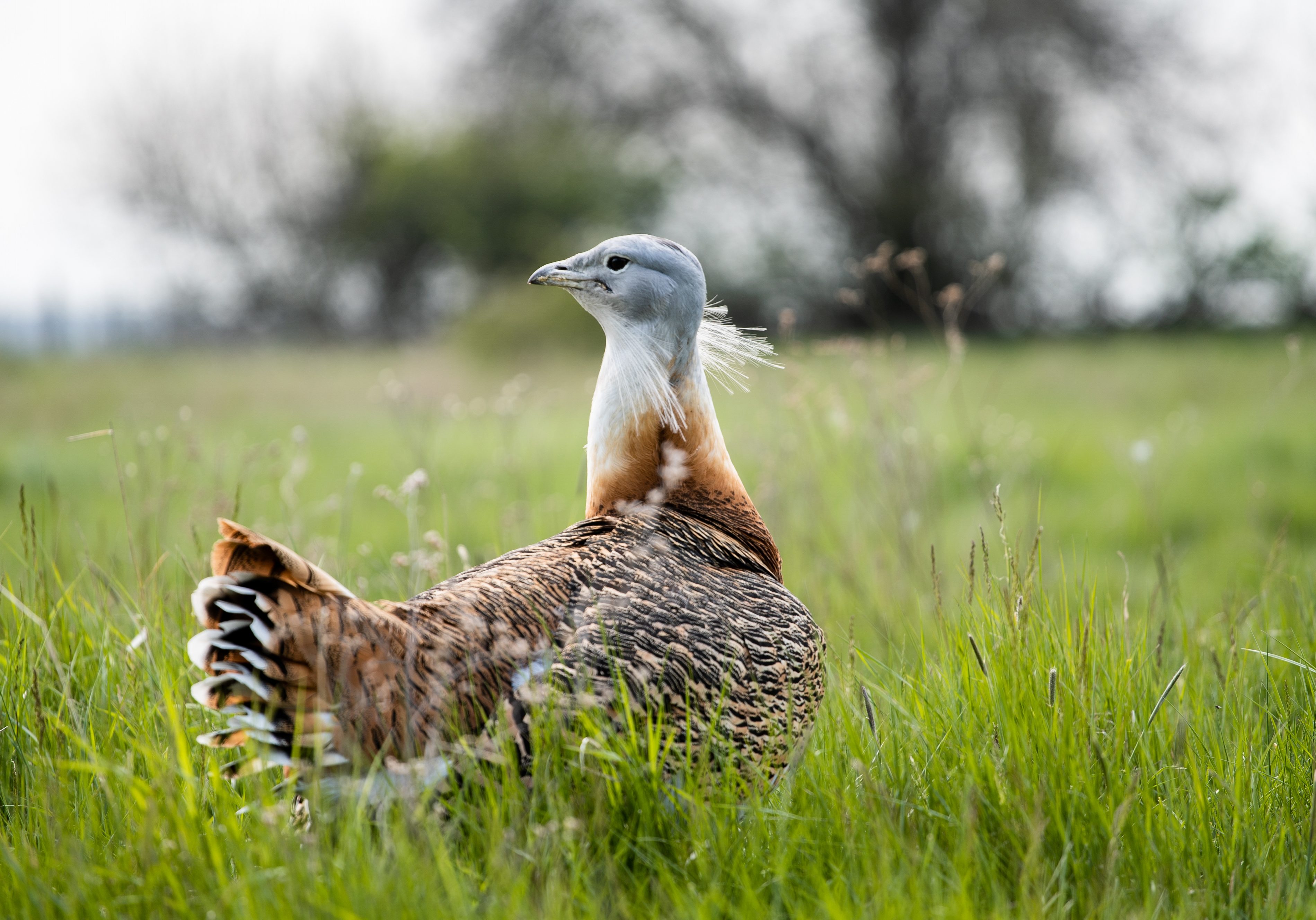
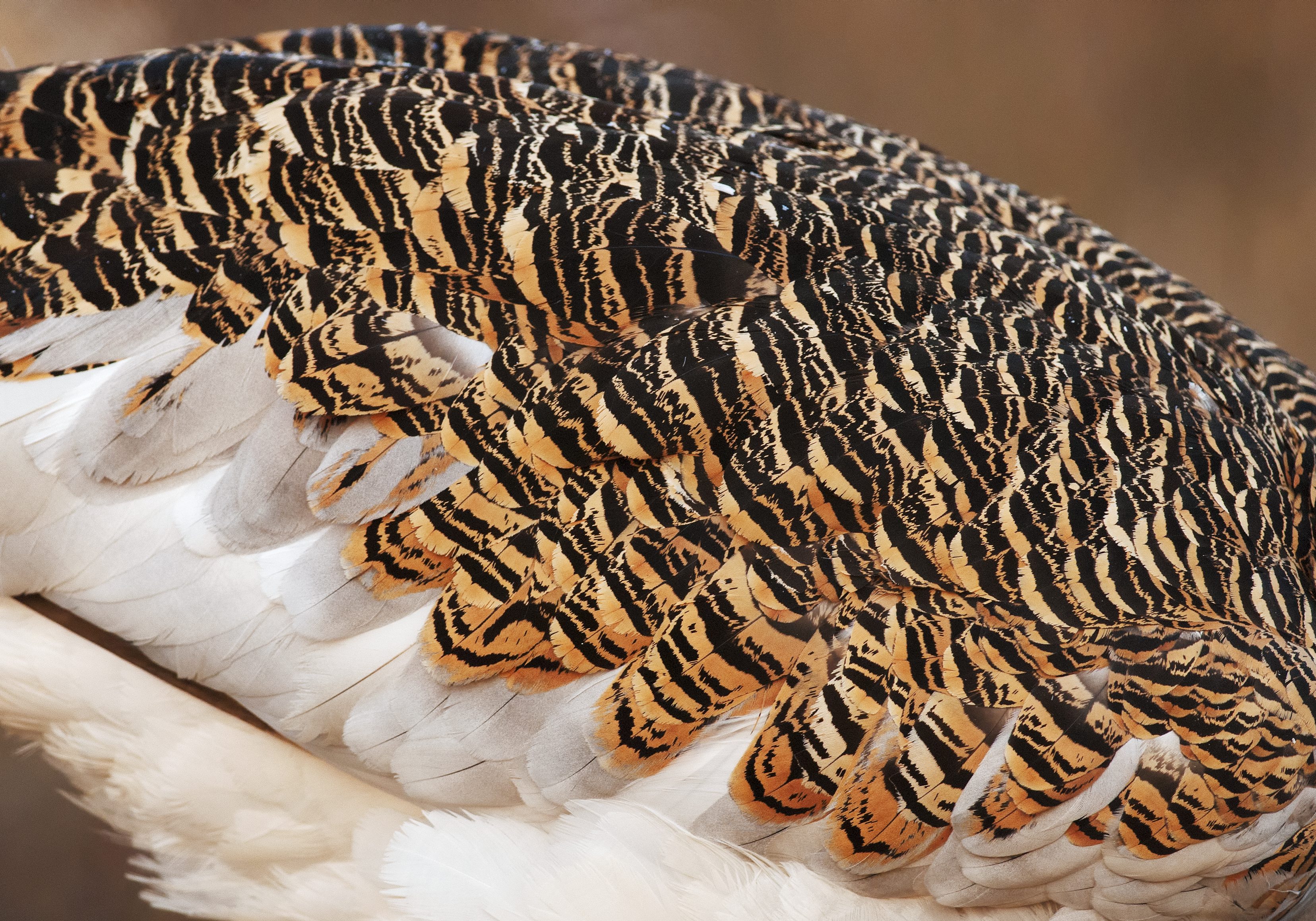
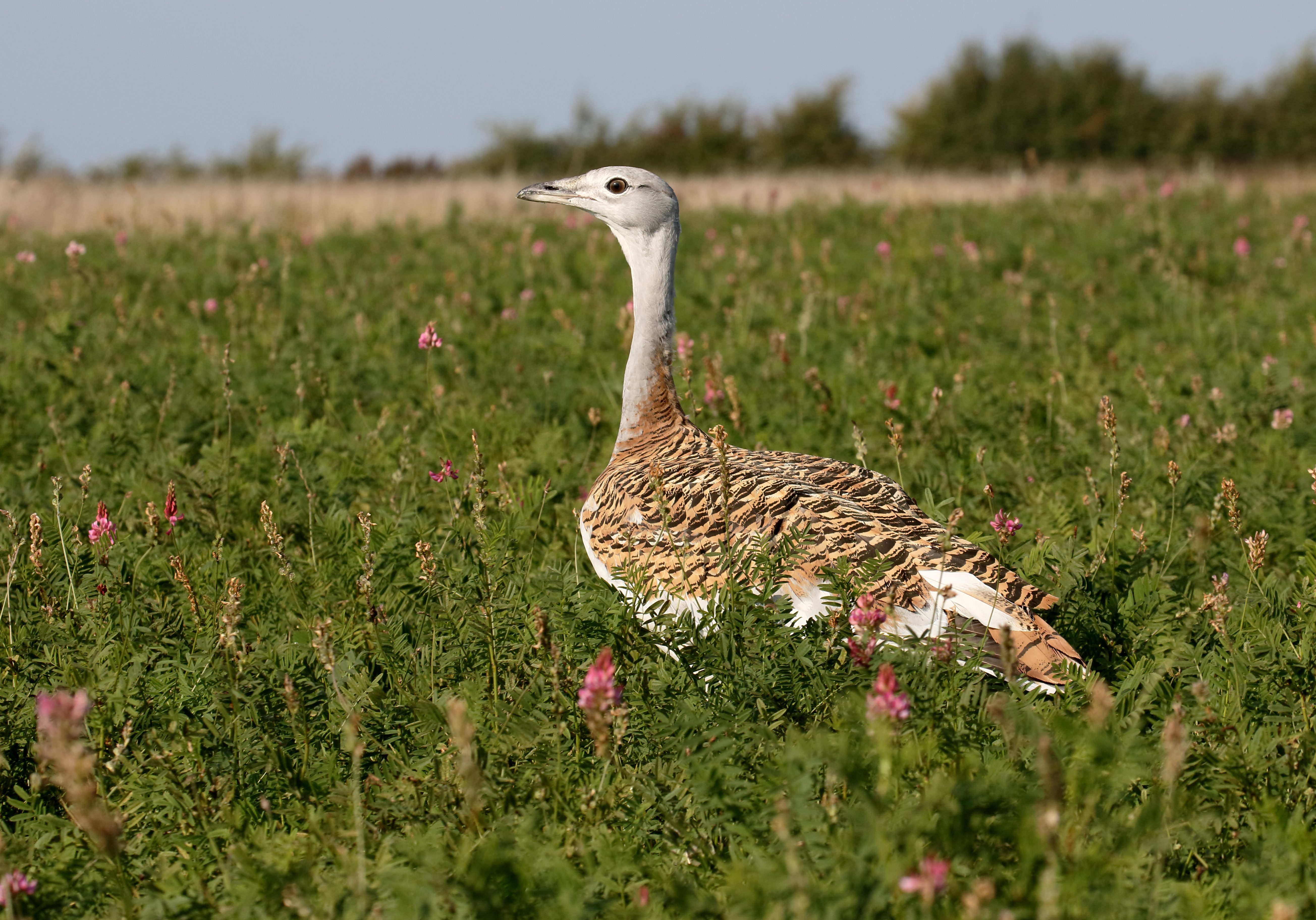
LEKKING
In spring these normally well-camouflaged birds transform. The males seem to puff themselves out, growing and turning white in an elaborate display. The male bustards choose their ground, turn their wings and tails inside out in a big puff of white feathers and inflate the gular pouch, a balloon in the neck and erect their whiskers near their beak. This “wheel” or “foam-bath” is for the purpose of attracting females. These white feathers are UV reflective, when they point their rear to the sun, it is visible from several kilometers.
This display is known as ‘lekking’ and males will often gather at a ‘lek’ to try and impress the females. If interested, the females will circle the male and choose their mate on his appearance, often looking at the whiteness of his rear plumage. Mating is practically the only moment at which a female and a male Great Bustard seem to be interested in each other. Once the breeding season is over the males do not help rear the chicks and will return to their drove.
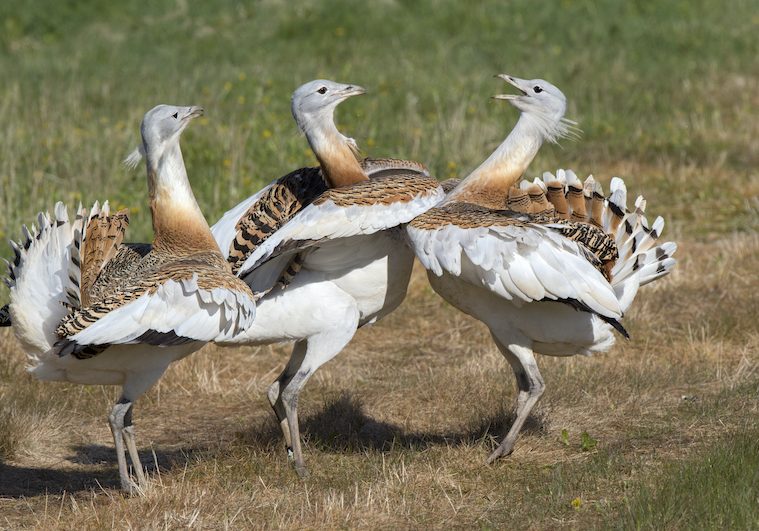
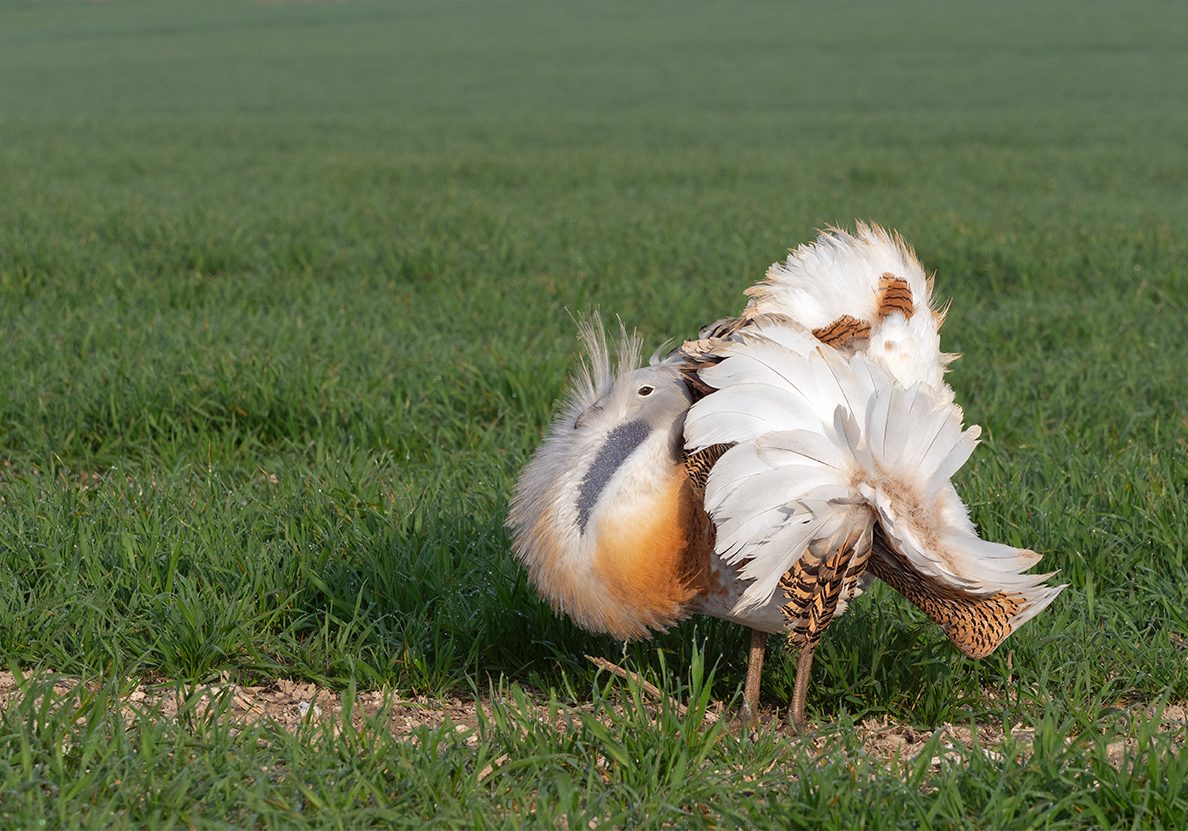
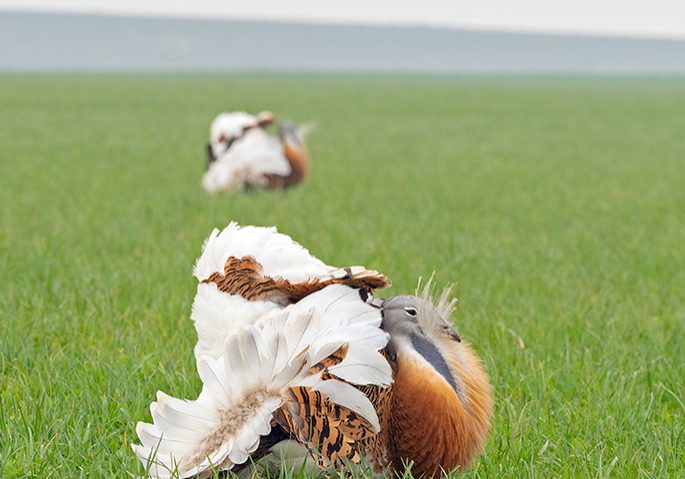
NESTING & REARING
The female plumage is more cryptic (camouflaged) than the male's, which serves them well, as it is the hen that incubates the eggs on the nest, which are scrapes in the ground. As breeding occurs in early spring, sitting females are easily seen by predators, both avian and mammalian, resulting in lost eggs and chicks. Natural mortality in the wild, is more than 80% in their first year. Those that survive their first year typically live on for between 15 and 20 more.
The Great Bustard Conservation Group will rescue any abandoned nests and hand rear chicks, before releasing them back into the wild.
Incubation takes 26 days, and the chicks are highly active. Being nidifugous, they can leave the nest site after 1 day. The female will then lead them away from the nest, feeding them on a diet of insects and grubs. Young bustards begin developing their adult plumage at about 2 months and begin to develop their flying skills at the same time. The bond between great bustard mothers and their chicks is very strong and usually remains in place until the mating season the following spring.
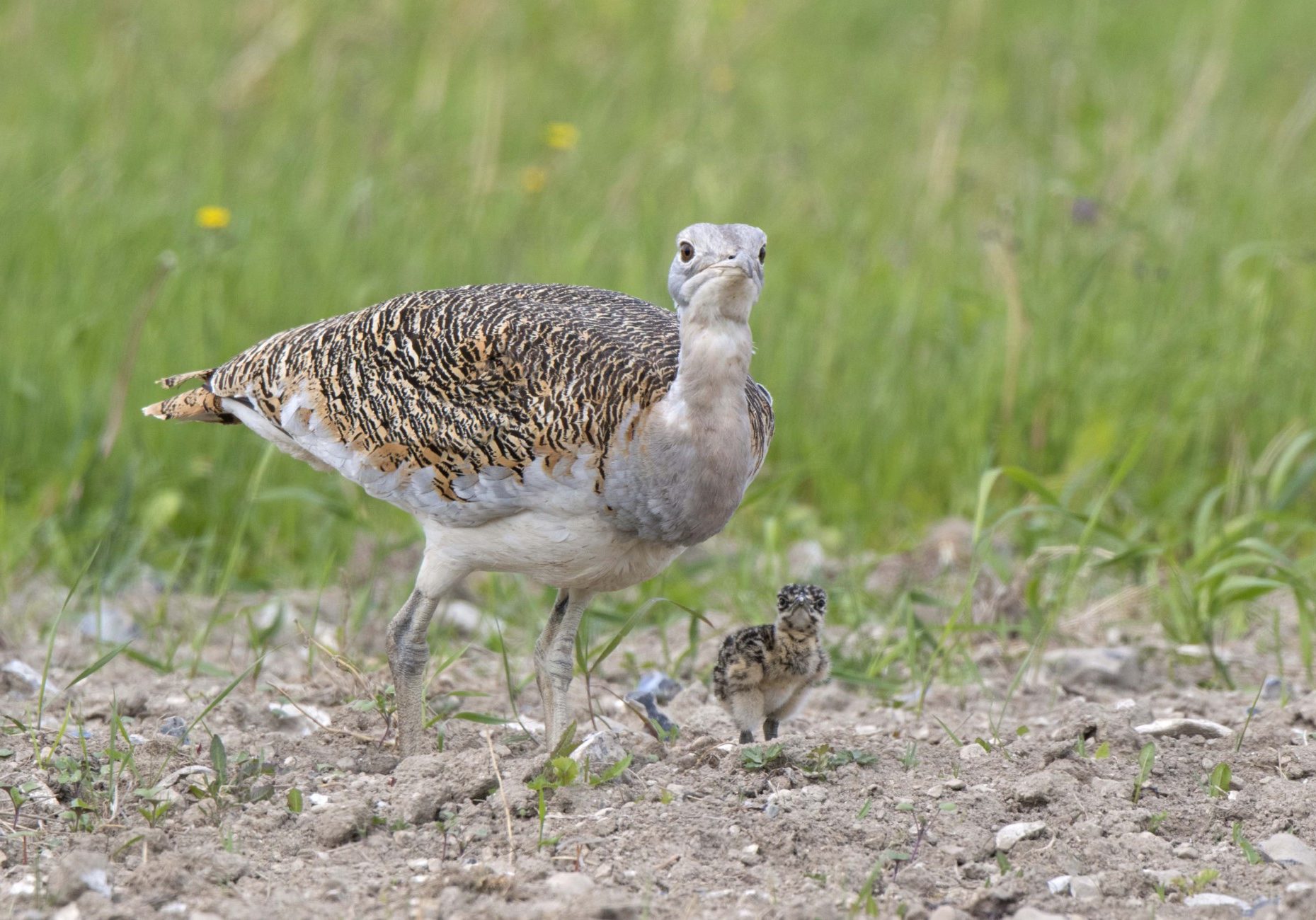
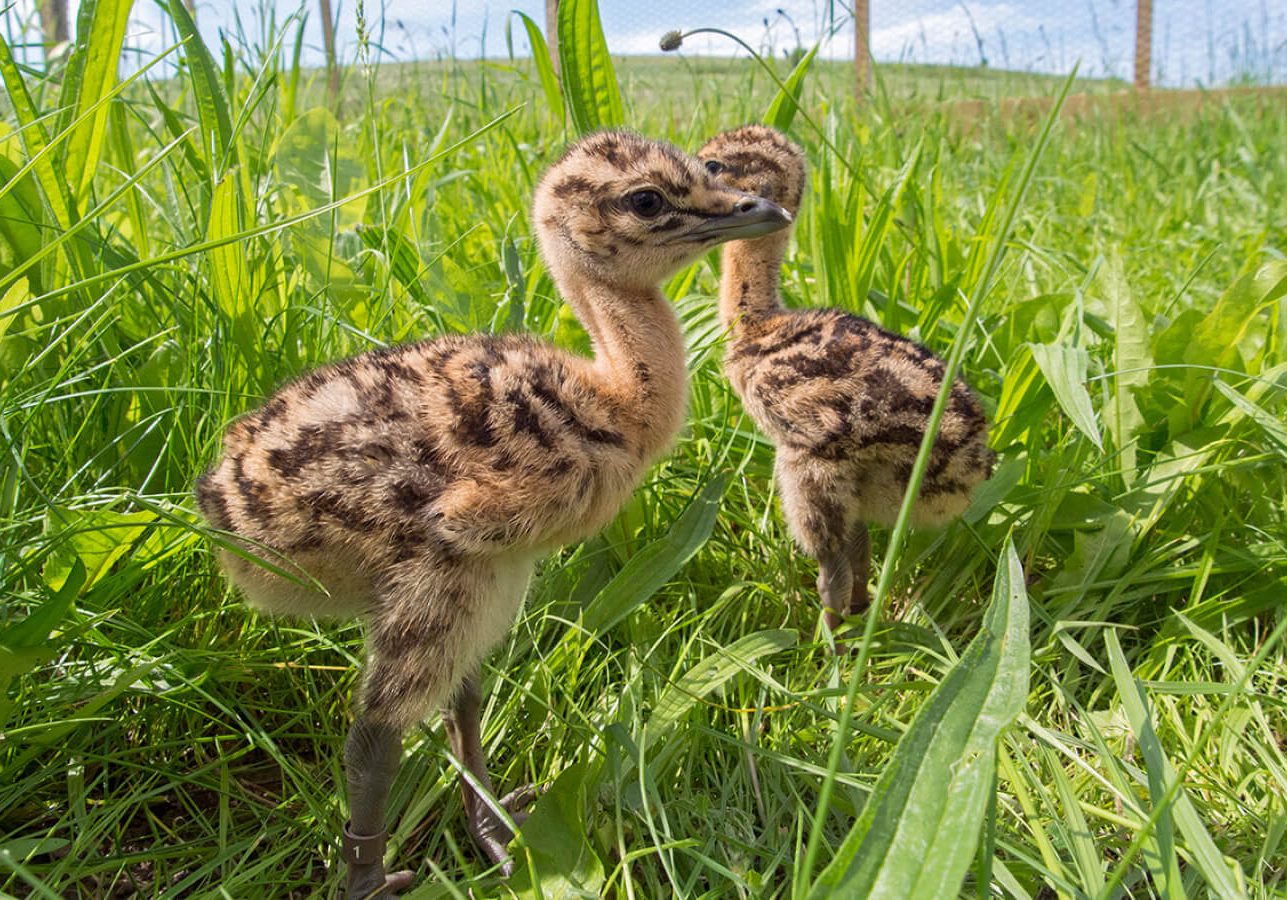


CONSERVATION
In 1998 David Waters created the Great Bustard Conservation Group whose objective was to bring back the Great Bustard to its old breeding grounds on Salisbury Plain. It has not been an easy journey for him, but with an amazing team and generous benefactors many of the hurdles and obstacles have been overcome. The first release of birds occurred in 2004. To date there are now over 50 Bustards, with the population now established and beginning to breed self-sufficiently. They hope that in 2024 the population will grow to 75.
Naturally birds do get injured, these are collected and nursed back to health. Pending on the injuries the majority will be released back into the wild. Those with serious injuries and unable to fly will find new homes, where they can flourish under supervision. One such place is the Watatunga Wildlife Reserve who have planted 3 hectares of lucerne, vetch, sainfoin and clover as natural food sources.
For this to really become a success story, when globally the populations are in decline, the group need to provide more safe nesting areas, not just on Salisbury Plain. This can only be done by working alongside the farming community, renting or even buying land. They also need the UK’s statutory agencies support, to ensure the Great Bustard receives the recognition and protection it deserves. This can only happen through public support, more importantly your support.
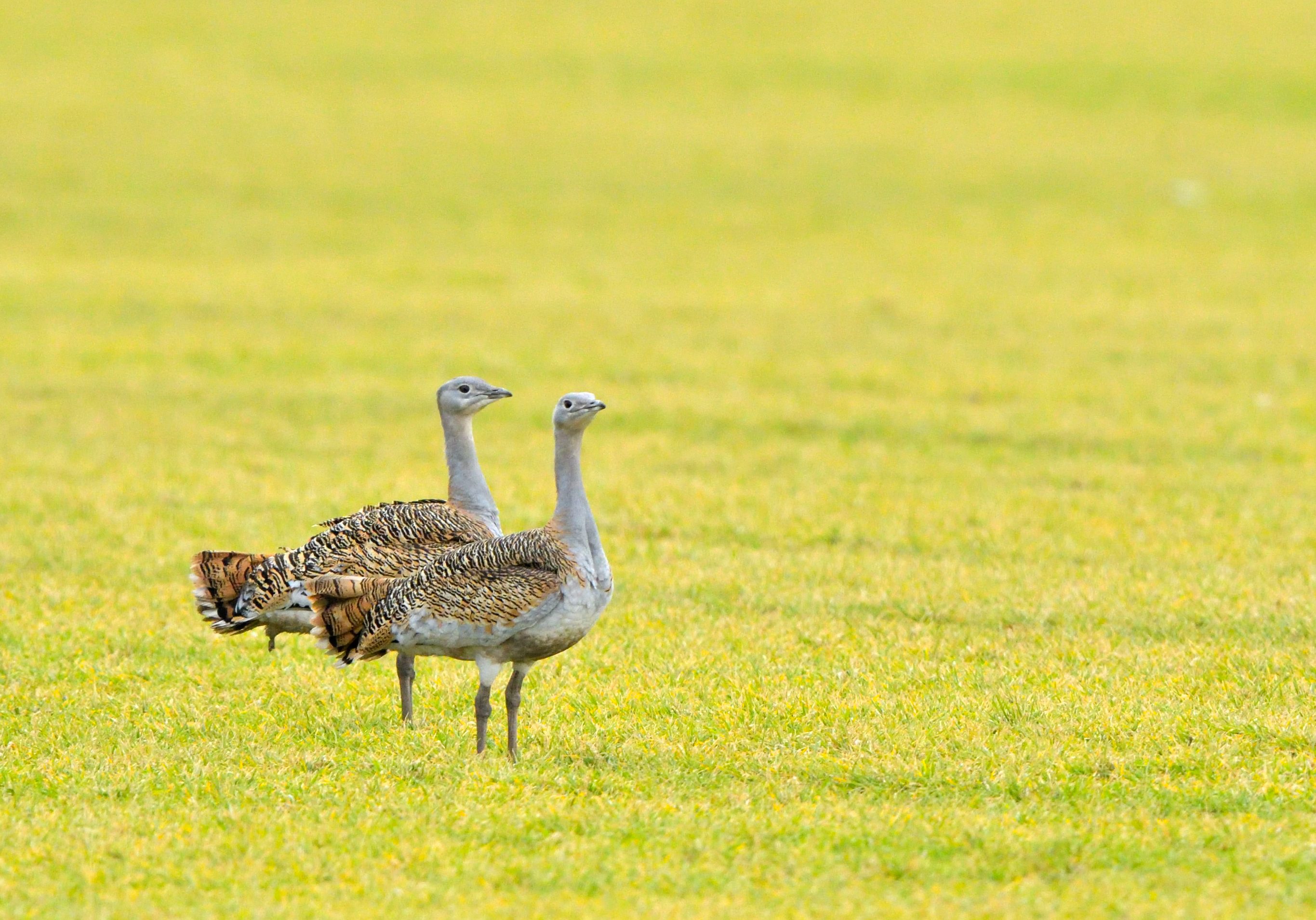


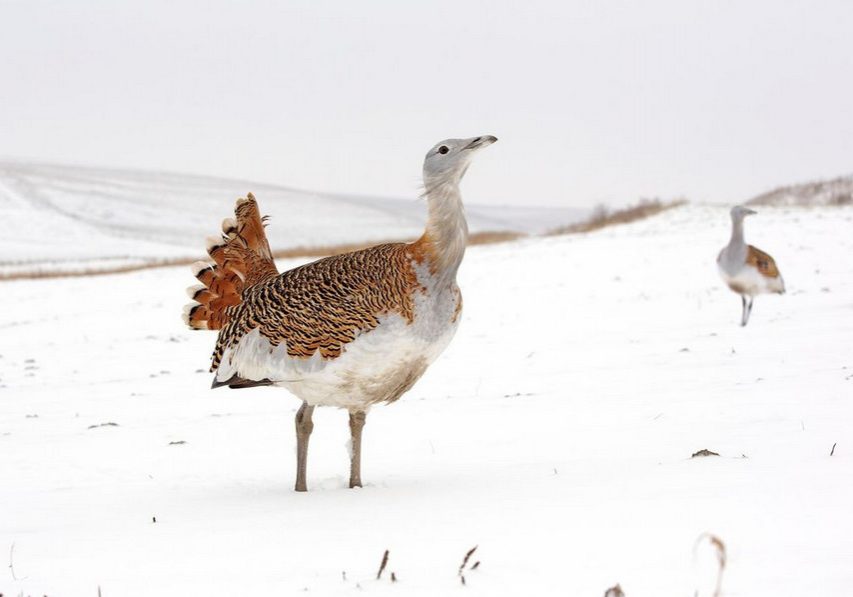

KING & QUEEN OF THE PLANT WORLD
Great Bustard Gin uses several botanicals that are found within the birds diet, two of these are red clover and lucerne. The Romans called them the 'Father of all plants.' Yet with modern farming practices these two plants have fallen into the wayside. Both plants can play significant roles in sustainable agriculture by enhancing soil health, reducing the need for chemical inputs, supporting biodiversity, and improving ecosystem services.
They are leguminous, meaning they have the ability to fix atmospheric nitrogen into the soil through a symbiotic relationship with rhizobium bacteria in its root nodules.
This process converts atmospheric nitrogen into ammonia, which the plants can then use, thereby enriching the soil with essential nutrients. Both red clover and lucerne have deep root systems that help improve soil structure. Red clover’s roots enhance soil aeration and permeability, while lucerne's deep roots break up compacted soil layers, increase water infiltration, and reduce soil erosion.
These plants can improve pest and disease management by attracting beneficial insects that prey on crop pests. By disrupting pest life cycles and reducing the incidence of certain diseases, it minimizes the need for chemical pesticides. With the deep roots of both plants they can help increase the amount of carbon stored in the soil, contributing to carbon sequestration efforts and helping mitigate climate change. These plants are truly the King and Queen of the plant world and we are proud to enlighten you about these forgotten wonders from an ancient era in a modern world.

CREATING GREAT BUSTARD GIN
Base: Grain Spirit
Botanicals: Yarrow, lucerne, red clover and wild rocket
Style: London Dry / contemporary
Available: Local shops and online
Refills: In 700ml packs only
Great Bustard Gin was created in partnership with David and the Great Bustard Group. We worked our way through a list of botanicals that Great Bustards enjoy, though no insects were experimented with! We created a base recipe which was then built on to provide the layers and depth. At the same time, we wanted to ensure it could be enjoyed by everyone and therefore some ingredients were sidelined, looking at you fennel and anise. The result is a light, warming spirit that has sweetness from the clover and pepper notes from the rocket, with a soft ginger and cardamon backbone.
The design was created by Rob Bartlet. The triangular design reflects that Bustards have tridactyl feet. This means they only have three toes, which all face forward lacking an opposable hind toe (hallux). This means they can run very fast, but cannot perch on anything, so they are a ground-dwelling bird.
In buying a bottle of Great Bustard Gin, you are supporting the charity and helping them obtain new habitats. Should you see us at an event, you might meet one of the conservation team who have made this inspirational story come to life.
Thank you.
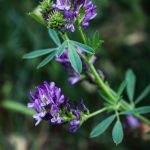





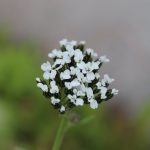


BUSTARDS IN THE MEDIA


